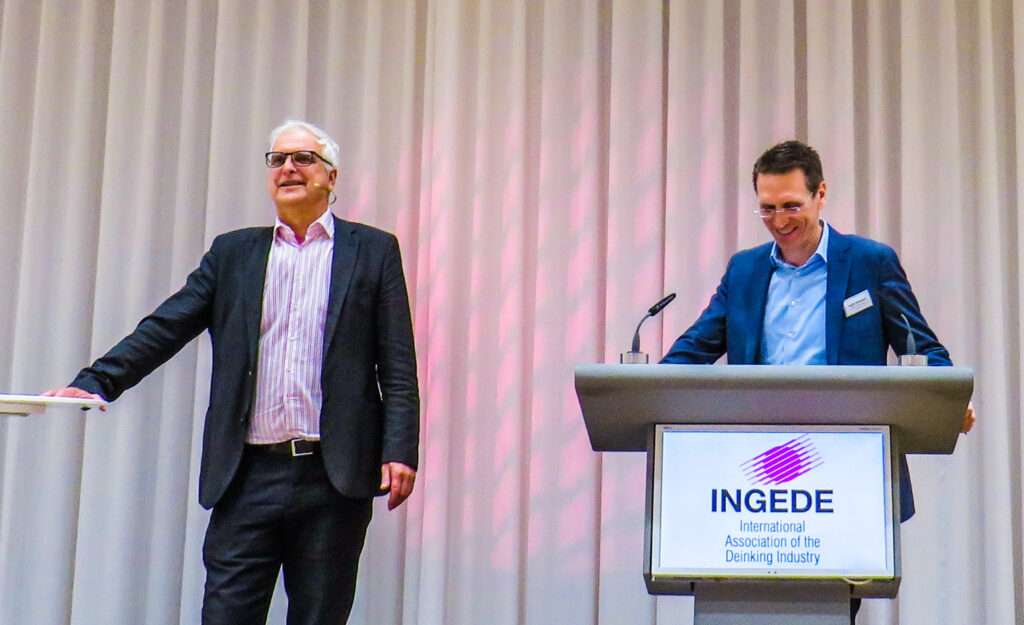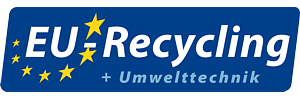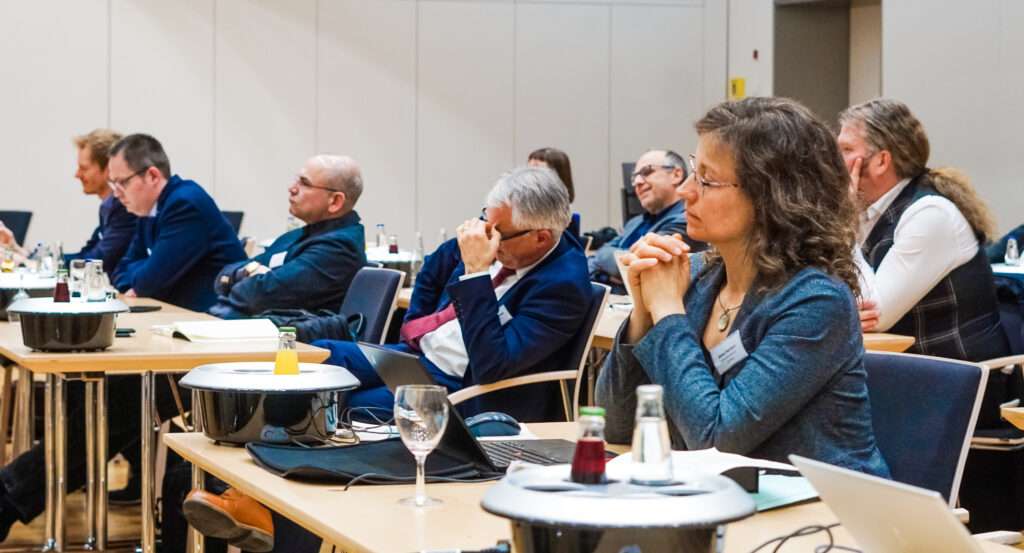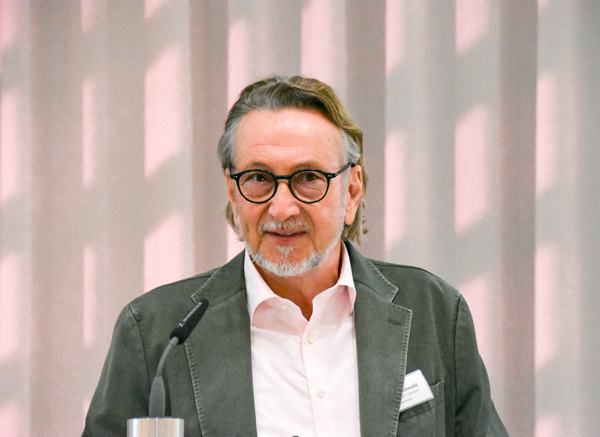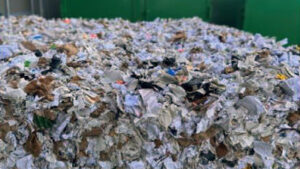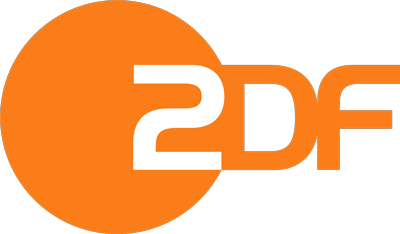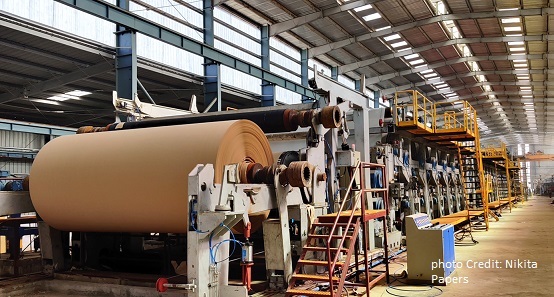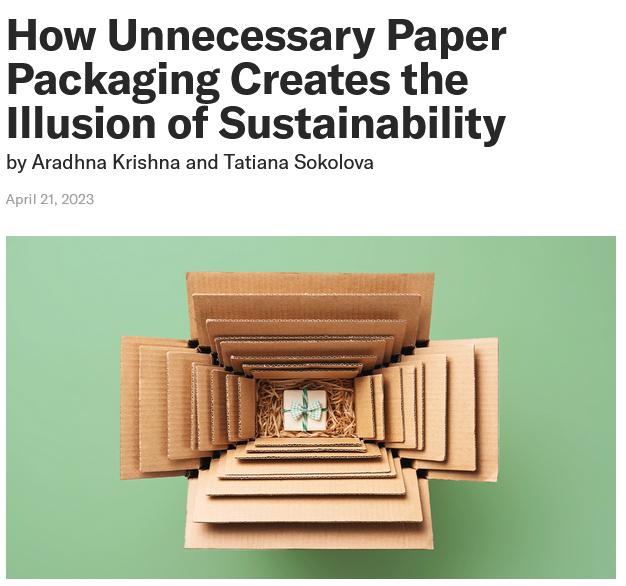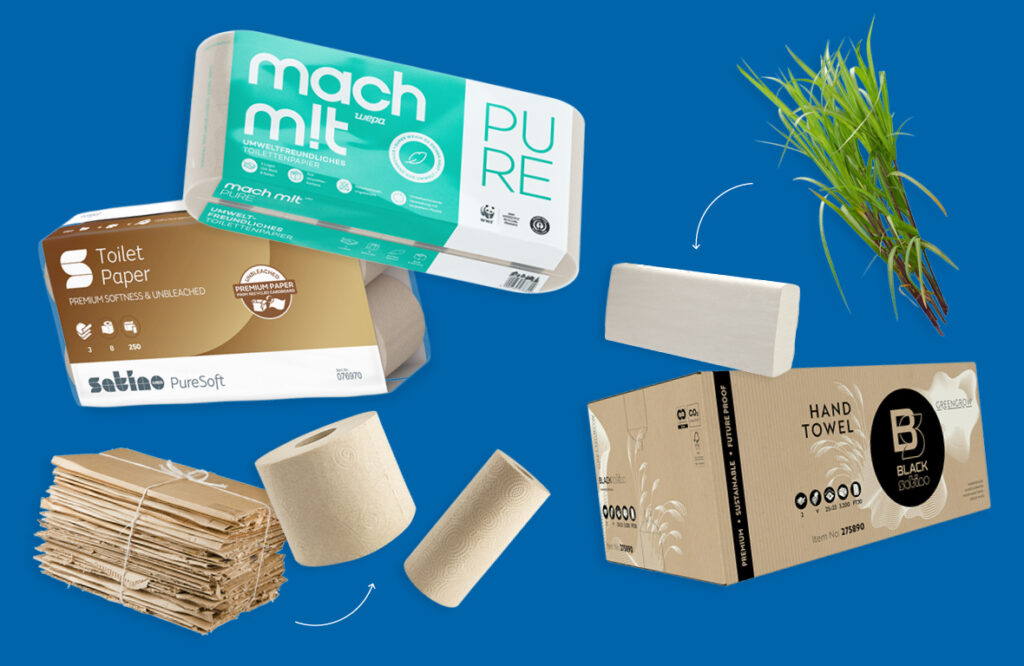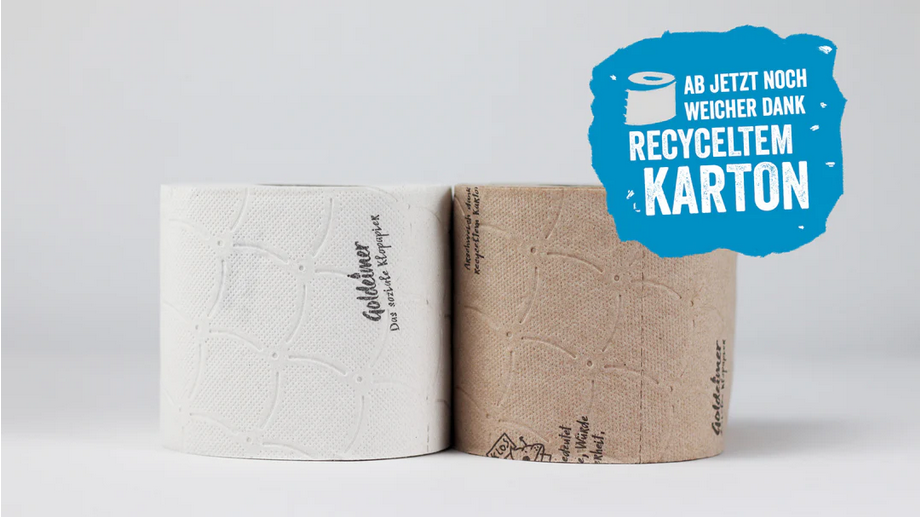INGEDE News July 2023: What will we make paper from in the future? Availability and quality of recovered paper at the INGEDE Symposium
- Calendar of Events
- INGEDE Symposium 2023
- Blue sales slips contaminate valuable paper for recycling
- bvse deputy Steingaß: Europe is still net exporter of paper for recycling
- Hydrogen instead of natural gas at Essity
- How unnecessary paper packaging creates the illusion of sustainability
- Toilet paper from recycled board
- SUBSCRIBE here to our monthly newsletter!
INGEDE Symposium 2023:
What do we make paper from in the future?
"The potential for substitution is limited"
Consumption and thus availability of graphic products continue to decline. At the same time, white recycled fibres are increasingly used not only in graphic products. This year’s INGEDE Symposium in Munich in March dealt with the supply shortage of graphic recovered papers and its causes.
A summary by Marc Szombathy (EU-Recycling), translated with the help of DeepL, edited by Axel Fischer
Thomas Krauthauf, Chairman of INGEDE, gave an overview of the development in the recovered paper market in his introductory speech: consumption and thus the availability of graphic papers for recycling continue to decline. The quality of recovered paper arriving at the paper mills is dwindling. White recycled fibres are increasingly used in non-graphic products. A large part of the collected paper for recycling bypasses the sorting and deinking facilities of the paper mills and goes directly into packaging production. In this context, INGEDE speaks about a loss of the maximum added value, which is intensified by the continuing trend towards elaborate and oversized packaging made of composite materials. In contrast to classic folding boxes, this packaging is often difficult or impossible to recycle – even if it is fibre-based.
Greenwashing and consumer deception are present in many cases when packaging appears to be made of paper – and feels like it – but is composed of other (plastic) materials. The consumer is led to believe that it is an ecologically sustainable product made from renewable raw materials, which it is not and which makes collection, sorting and recycling more difficult. Where to put it as waste: in the blue paper bin or in the yellow bag? Consumers are overwhelmed by this and are also not prepared to separate food packaging according to material components – as studies show: Only two per cent of consumers in Germany would, for example, separate the paper sleeve of a multi-component package from the plastic, and dispose of it separately.
Are plastic and aluminium the better choice to package food for a longer shelf life? Which other materials offer themselves as barrier protection and fulfil the deinking and recycling criteria? These questions were discussed by the speakers at the INGEDE Symposium 2023, and possible solutions were presented. Martin Drews (Die Papierindustrie e. V.) started by informing about the update and new version of the Declaration of Commitment of the Working Group of Graphic Papers (Agrapa), which was sent to Federal Environment Minister Steffi Lemke on 17 April 2023. The coordination process with the Federal Environment Ministry and the Federal Environment Agency took a good two years and ended in December 2022.
The declaration essentially contains a phase-out of newsprint inks containing mineral oil (in two stages) by 2028 and a commitment to further increase the proportion of recovered paper in graphic papers and the use of paper with the Blue Angel eco-label. As Drews admitted, this is currently difficult to implement “because not enough graphic waste paper is made available. Therefore, the graphic paper commitment is not aimed at actually increasing the use of recovered paper, as this can only be influenced to a limited extent.” However, efforts to increase the use of recovered paper are to be documented. The goal of “mineral-oil-free newsprint inks” is also difficult to achieve, he said, and can only be done in partial steps, as there are not sufficient quantities of inks available in a conversion phase. By 31 December 2025, the volume of mineral oil from newspaper inks is to be halved compared to the reference year 2020, and by 31 December 2028 it is to be completely replaced by mineral oil-free newspaper inks. Ralph Dittmann (WKS Druckholding GmbH) interjected in the discussion that the voluntary commitment was being undermined by paper manufacturers. Mineral oil-free inks in print products are still an exception.
Arne Kant (AFRY Management Consulting) looked at fibre use in global paper production and examined the extent to which waste paper can be substituted by other raw materials. His presentation picked up on reports from 2021 on the situation on the global paper markets. According to these reports, the use of primary fibres in paper production has increased slightly and that of secondary fibres – although cheaper to procure – has decreased somewhat. The supply of good-quality recovered paper has become scarcer overall.
In Germany and other EU countries, paper for recycling is not collected separately according to graphic and packaging papers. According to the speaker, packaging has meanwhile recorded the highest growth rates in the paper sector. In contrast, the markets for white grades have been shrinking for about 15 years. The packaging industry is withdrawing more and more quantities, which are then missing for the producers of graphic and hygiene papers. For Kant, this is not a problem in itself, “because the reduced supply is also matched by reduced demand, and this results in reduced production. If we consider the system closed, it is irrelevant whether it is 30 or 15 million tonnes that we are sensibly recycling.” The problem arises elsewhere: “We have too many losses in the system. The losses in Germany are mainly caused by the mixed paper collection via the blue bin.
One solution would be to collect the grades in a much cleaner way already. But where should this be done? Directly at the source? Another bin for household collection? Kant worries that “we are overdoing it” and that the additional collection effort will also drive up the costs of the sorting facilities. The collection systems should be expanded and improved, but a collection rate of 100 per cent is economically illusory: “Maybe 95 per cent is achievable, in Germany we are at 79 per cent. The first 50 per cent are relatively easy to collect. The next 20, 30 per cent are feasible with effort. The collection of the last tonne then becomes really expensive.”
The expert also showed where the recovered paper export flows have shifted to after China’s import ban (since January 2021) and how the collection systems in Europe, North America, and Asia differ from each other. The top exporters are the USA, Canada, and the Nordic countries (Denmark, Iceland, Norway, Sweden, and Finland). Spain, the Netherlands, Germany, Austria, and Hungary import more recovered paper than they export. In Turkey it is forbidden to export the raw material: “They have so little of it because the collection is so badly organised. What is there has to stay in the country.” Meanwhile, Kant does not think much of export restrictions and trade regulations. Until three years ago, China was the main buyer of recovered paper, but today the raw material is mainly exported to Southeast Asia. Even if the People’s Republic no longer wants to be the “dustbin of the world”, large quantities of recovered paper still end up there – on detours via Southeast Asia, where the raw material is processed for export to China.
Raw material alternatives – what’s “wrong” with it
Finally, Kant discussed the substitution potential of annual plants in paper production. For example, straw has been used for a hundred years. One disadvantage is the yellow tinge in the paper product. Kant described the strength properties of the papers produced with it as “poor”. There are already promising technological solutions, but it remains to be seen whether they can become established.
Grass and sugar beet residues are also used as raw material alternatives, and the silphia plant even enables a cascade use, as Kant explained: “You store silphia as silage and use the liquid to produce biogas. The silphia fibre residues are processed into paper.” However, the raw material alternatives mentioned “suffer from one thing”: their usability is only 20 to 30 per cent due to sensory difficulties, strength and optical problems. It is not possible to make paper from these fibres, only to add them. “The substitution potential is therefore limited,” Arne Kant stated. The industry should therefore not expect too much from the field of alternative raw materials.
Axel Fischer (INGEDE), who moderated the symposium, criticised the so-called 95/5 regulation of the European Union in his introduction to the next block of topics, “Fibre-based packaging”, as being neither practicable nor purposeful for more recycling: Packaging that contains at least 95 per cent recyclable materials and a maximum of five per cent problematic non-recyclable contaminants can be more difficult to recycle than packaging with less “recyclable” material and more of another component with little or no impact, according to the statement.
The decisive criterion for recyclability is that the recyclable materials can be separated from the foreign materials. And that is the problem with multi-layer packaging: how do you get the composite materials apart in the recycling process? Does the consumer take the trouble to separate the cardboard from the plastic of an empty yoghurt pot because it contains the best virgin fibre, which belongs in the blue paper bin? Fischer used a product from the food company Nestlé to show how well so-called 85/15 packaging – i.e. with less recyclable material and more foreign matter – can be recycled.
“How much more plastic do we need?”
After the presentation by Ulrich Leberle (Cepi) on the EU Commission’s proposal for a new packaging regulation, Jürgen Schwald (BMS Papier Concept GmbH) presented food packaging made of cellulose and paper that the company has developed and markets. Even the “viewing window” of the cheese packaging presented does not contain plastic. Are the imprints deinkable and how do the adhesives used affect the recyclability of the packaging? However, these questions from INGEDE still need to be answered. Urban Buschmann (Climate3 Sustainability Consulting) then explained his “environmental calculation system” as a basis for targeted material developments. “How much more plastic do we need?” Pure and unbleached paper bags – for example for frozen food, rice or dry pasta – could have long since replaced conventional plastic packaging. The CO2 balance in production is significantly better than that of plastics.
Market recovery has failed to materialise
“What will we make our paper out of in the future?” This was the topic of the first session in the afternoon after the introduction by Anne-Katrin Klar (Essity GmbH). Hans Wortman (Wepa Group), as chairman of the Cepi Recycling Committee and the 4evergreen initiative, shed light on the situation in the paper industry: according to Cepi statistics, paper consumption in Europe remained stable in 2022 despite the economic slowdown. However, paper and board production decreased by 5.9 per cent compared to the previous year 2021. Total production in 2022 reached 84.8 million tonnes. A decline was reported for all paper and board grades, excluding household and hygiene grades. Production of packaging grades is estimated to have declined by 4.6 per cent compared to 2021: case materials down 4.8 per cent, cardboard and other packaging board down 4.1 per cent, and wrapping paper grades down 5.2 per cent. The production of sanitary and household paper, on the other hand, increased by 2.2 percent. Total production of graphic grades fell by 11.3 per cent, newsprint by 9.9 per cent and printing and writing papers by 11.5 per cent.
The Corona crisis accelerated the trends towards e-commerce, digitalisation and home office. Due to the war in Ukraine, a market recovery has failed to materialise. “Continued high energy and commodity prices, volatility, trade sanctions and economic unpredictability leave the industry no choice but to adapt to these new realities,” Wortmann summed up. Paper and board exports declined by 13.3 per cent in 2022, while imports increased by 6.8 per cent:
Exports to neighbouring European countries -10.5 per cent
Exports to Asia -27.9 per cent
Exports to North America -2.0 per cent
Exports to Latin America -8.9 per cent
Exports to other countries of the world -9.7 per cent
Pulp production, with a total output of 14.7 million tonnes, decreased by 3.7 per cent in 2022 compared to the previous year. Downtime and strikes weighed on performance. The use of paper for recycling decreased by 6.4 per cent in 2021 compared to the previous year. High electricity and gas prices affected recycling plants and non-integrated paper mills, especially in the second half of 2022. “Paper recycling is more of a European issue than before,” Hans Wortmann concluded. More than 90 percent of recycled paper is produced for the European market in European paper mills. Exports slumped by almost ten per cent in 2022, partly due to the hard lockdowns in Asia. Cepi expects even more graphic paper to be diverted to the production of packaging paper.
Aktuelle Forschungen analysieren das Potential bislang ungenutzter Rohstoffquellen oder beschreiben die Veränderung des Stoffstroms Altpapier und deren Auswirkung auf die Prozesskette. Karoline Raulf (RWTH Aachen) stellte dazu das Projekt EnEWA vor. Das Kürzel steht für: Energieeinsparung bei der Papierproduktion durch Erschließung der Wertschöpfungsketten Altpapier aus Leichtverpackungen, Restabfall und Gewerbeabfall. EnEWA verfolgt den Ansatz, neue Quellen für das umweltfreundliche Altpapierrecycling zu erschließen und nutzbar zu machen. Das zentrale Element des Forschungsprojektes ist die Untersuchung des Potenzials zur (Rück-)Gewinnung der Papierfasern aus gemischten Abfallströmen (Leichtverpackungsabfälle, Gewerbeabfall und Restabfall) für die Papierproduktion.
Schon heute haben papierbasierte Verpackungen aus der Lebensmittelindustrie einen signifikanten Anteil mit steigender Tendenz. Eine Rückgewinnungsmöglichkeit der Fasern aus diesen Leichtverpackungen würde zur gesteigerten Akzeptanz bei Produzenten und Verbraucher – und damit zu vermehrtem Einsatz dieser Verpackungslösungen – beitragen, ist Raulf überzeugt. Letztendlich könne so die Menge der zur Verfügung stehenden Recyclingfasern durch einen weiteren Stoffstrom zum Nutzen von Umwelt, Mensch und Kreislaufwirtschaft erhöht werden. Darüberhinausgehend werde die Nutzbarmachung des vor allem im privaten Umfeld falsch entsorgten Papiers – sogenannte Fehlwürfe – geprüft, um es ebenfalls zu neuem Recyclingpapier aufzubereiten.
Die Beteiligten des Projekts an der RWTH Aachen befassen sich mit den verschiedenen Phasen der Altpapiersammlung, -gewinnung und -aufbereitung. Nach einer Analyse der zu gewinnenden Altpapiersorten und -verbunde sowie deren Qualität im Rahmen von Stoffstromanalysen soll im zweiten Projektabschnitt die notwendige Sortiertechnik entwickelt und angepasst werden.
Das Institut für Anthropogene Stoffkreisläufe (ANTS) der RWTH Aachen verbindet im Projekt die angewandte Forschung mit dem Schwerpunkt der Stoffstromcharakterisierung und verknüpft die Primärdatenerhebung mit der ökologischen Bewertung und Modellierung der Prozesse. Zusätzlich wird die Verwertbarkeit der Rejekte analysiert und erprobt. Die Stoffstromcharakterisierung im ersten Schritt legt nicht nur das sekundäre Wertstoffpotential offen, sondern ist auch unerlässlich für alle weiteren Aufbereitungs-, Sortier- und Recyclingschritte. Eine Analyse von Stoffströmen in dieser Größenordnung stellt besondere Anforderungen an die statistische Auslegung und die praktische Umsetzung der Probennahmen. Die ökologische Bewertung wird projektbegleitend durchgeführt und stellt sicher, dass der Recyclingprozess die Entwicklung hin zu einer Circular Economy fördert. Eine Szenarioanalyse zeigt zudem unterschiedliche Möglichkeiten des Recyclingverfahrens auf und gibt maßgebliche Impulse bei der Prozessmodellierung. Die Verwertung der Rejekte ist ein wichtiger Schritt, um den gesamten Kreislauf auf Dauer zu schließen.
Die in der Sortierung gewonnenen Altpapier- und Papierverbundsorten durchlaufen zur Gewinnung von Papierfasern sowohl reguläre als auch spezielle Aufbereitungsprozesse im Recycling, welche im Projekt durch eine zusätzliche Hygienisierung – zur Vermeidung einer mikrobiologischen Belastung – erweitert werden. Abschließend erfolgt die Überprüfung der Papierqualität durch die Leipa Group GmbH, um sicherzustellen, dass die bislang hohe Papierqualität erhalten bleibt. Karoline Raulf geht davon aus, dass etwa 30 Prozent der Fehlwürfe wiederverwendet werden könnten. Durch Recycling des zusätzlich gewonnenen Altpapiers ließe sich der jährliche CO2-Gesamtausstoß der deutschen Papierindustrie um 2,5 Prozent reduzieren.
Neben schlecht deinkbaren Farben sind schwer zu entfernende Klebstoffe das größte Problem beim Papierrecycling. Nur ein Teil lässt sich etwa durch Siebe ablösen; andere sind so klein, dass sie mit den Fasern mitschwimmen und erst in der Trockenpartie wieder auftauchen. Die Schäden sind erheblich. Das zeigte die Präsentation von Axel Fischer (INGEDE) zum „vernachlässigten“ Thema Stickys.
Was sind Stickys? Eine undefinierte Mischung aus organischen Verbindungen (hauptsächlich verschiedene Ester), die sich auf der Papiermaschine ablagern. Die Bestandteile stammen von Lackbindemitteln (Latex), Wachsen, Schmelz- und Haftklebstoffen oder Zusatzstoffen für die Papierherstellung. Stickies verursachen Blechbruch (der Produktionszyklus wird unterbrochen), Probleme mit Maschinen-Bespannungen (die ihre Durchlässigkeit verlieren), Effizienzabfall im Trockner, Schäden am fertigen Produkt, Flecken, Nadelstiche oder falsche Porosität. Auf der Papiermaschine werden Stickies mit dem Papier in die Trockenpartie verschleppt und von den Schaufeln des Trockenzylinders gesammelt. Herabfallende Stücke führen zu Bahnrissen, verklebten Lagen beim Aufrollen und/oder Ablagerungen auf Walzen (z. B. Kalander). Beim Abrollen der verklebten Lagen entstehen Löcher und Risse.
Mit effektiven Deinkingverfahren (Siebung, Reinigung, Waschung und Flotation) lassen sich Stickys entfernen. Durch die Verwendung recyclingfreundlicher Papierbeschichtungen und die Veränderung der physikalischen Eigenschaften können störende Bestandteile, die Stickys verursachen, vermieden werden. Styrol-Acryl-Bindemittel erweisen sich als ideal für Papier- und Kartonbeschichtungen und stellen einen Durchbruch in der Entwicklung recyclingfreundlicher Klebstoffe dar.
Ein regionaler Papierkreislauf für Berlin – das ist das Ziel des „Regio Loop“-Projekts der Unternehmen Pinguin Druck und Leipa. Über den Stand informierten Sarah Lesting und Matthias Elsweier (Leipa Group). Arne Krolle (INGEDE) berichtete anschließend über Erfahrungen mit dem Prozess der Zertifizierung von Sortieranlagen (INGEDE-Projekt 169 21). Sie zeigen, dass parallel zur eigentlichen Zertifizierung der Aufbau einer neuen INGEDE-Methode zur Definition der optischen Qualitätsbestimmung durch eine Kamera in Echtzeit nötig ist.
Wie misst man in einem Strom von Altpapier automatisch den Gehalt an braunem Karton? Ein automatisiertes System erlaubt in einer Papiersortieranlage, schnell auf Qualitätsänderungen zu reagieren sowie die Qualität des produzierten Altpapiers zu dokumentieren. Das behandelte der Vortrag von Michael Lindner (UPM). Die „Sortieranlage der Zukunft“ hatten dann Martine Assié und Cornel Kuiper (Bollegraaf Recycling Solutions) vor Augen. Ein Schlüsselelement für die Konzeption ist die Datenerfassung, um fundierte autonome Entscheidungen zu ermöglichen, den Durchsatz, die Qualität und nicht zuletzt die Rentabilität der Sortieranlage zu optimieren.
Wareneingangskontrolle mit künstlicher Intelligenz: Das britische Unternehmen TrueCircle installiert AI-Kamerasysteme für Papiersortieranlagen, die kontinuierlich und in Echtzeit die exakte Zusammensetzung des ein- und ausgehenden Bandmaterials überwachen und kategorisieren – in detaillierte Fasersorten wie Zeitungen, Zeitschriften, Karton, Graupappe und weißes Papier. Jake Woolfenden (TrueCircle) zeigte, wie das funktioniert, und danach John Schulz (BTG Instruments GmbH), wie sich mit moderner Regeltechnik die Stoffausbeute optimieren und Schwankungen beim Produkt reduzieren lassen.
Der Trend zu mehr faserbasierter Verpackung und die Novellierung der EU-Verpackungs verordnung haben große Aufmerksamkeit auf Prüfmethoden und Bewertungsschemata zur Rezyklierbarkeit gelenkt. Ihre Vielfalt ist allerdings selbst für Fachleute unübersichtlich. Wie spielen die Methoden der INGEDE, Cepi, der Institute, der Allianz 4evergreen und genormte Prüfverfahren zusammen, und wo bestehen noch „weiße Flecken“? Das war zu guter Letzt von Andreas Faul (INGEDE) auf dem INGEDE-Symposium 2023 in München zu erfahren.
Blue receipts make valuable paper for recycling unusable,
if not harmful
25 tonnes with “Ökobon” could have stained up to 1,000 tonnes of further recovered paper
It almost turned into a massive loss: In July, attentive incoming paper inspectors at a paper mill discovered numerous blue shreds in the bales of a delivery of shredded paper for recycling and informed their colleagues. They rejected the entire delivery of 25 tonnes – reason: “The shipment contains a large amount of blue thermal paper”. And this “Ökobon”, also sold as “Blue4est”, is known to be not only unsuitable for recycling into white paper, but even in small quantities it can render entire loads of clean recovered paper unusable with the resulting black pigment soup that cannot be removed.
INGEDE has been pointing out since December 2019 that, contrary to the imprints of Edeka, Lidl, Obi, and others, the blue sales slips must not be disposed of with the recovered paper but, like all other thermal sales slips, belong exclusively in the residual waste.
See also: Das Blaue vom Himmel – Ökobon in den Restmüll! (German only)

bvse at the Paper for Recycling Day:
"Recovered paper industry has overcome the crisis"
At the 25th International bvse Recovered Paper Day in Stuttgart, Werner Steingaß, Chairman of the Paper Recycling Association and Vice President of the bvse Federal Association for Secondary Raw Materials and Waste Disposal, welcomed more than 500 participants from Germany, Europe, North America, and Asia.
In his speech, Werner Steingaß highlighted key issues from the past 12 months and stressed that the recovered paper industry had overcome the three-year permanent crisis.
The Chairman of the Paper Recycling Association explained that the difficulties in the paper industry caused by the economic situation had led to a sometimes quite considerable build-up of inventories. Steingaß: “In this difficult mixed situation, the export of recovered paper once again proved to be an indispensable valve. Without this valve of market relief, this crisis could not have been overcome, because we are still a net exporter of recovered paper in Europe amounting to about 6 million tonnes per year.”

Werner Steingaß (Pictures: bvse)
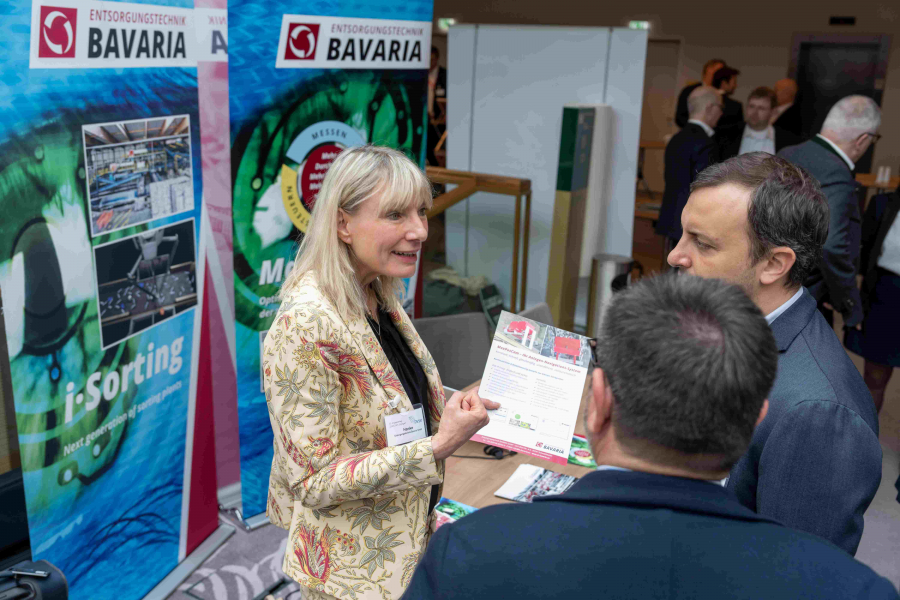
Hydrogen instead of natural gas at Essity
More than hot air: The paper manufacturer Essity is the first company in the world to develop a process for the industrial CO2-free production of paper without fossil fuels. The company with brands such as “Zewa” and “Tempo” is using hydrogen instead of natural gas in the paper drying process at its plant in Mainz on a trial basis.C
German Television reported in March 2023 about hydrogen economy following a
press release by Essity Germany
20 Paper Mills Shut in 6 Months, Industry Seeks Indian Government’s Support
A challenging period for Gujarat’s paper industry has led to the closure of over 20 out of 100 paper mills in the past six months. The Gujarat Paper Mills Association (GPMA) reports that mills are operating at a production capacity of 400,000 tonnes, significantly higher than the demand of 300,000 tonnes.
To address this crisis, the GPMA plans to meet Finance Minister Kanu Desai next week. They will seek support in the form of a power subsidy and request the reinstatement of reduced duty drawbacks, which dropped from 4.22% to 2.03%.
Each paper mill provides direct employment to 300 people and indirect employment to 1,000 more. The closures are taking a toll on the local economy, especially in areas like Vapi where 20 mills were located before 4 shut down.
The challenges faced by the industry include overproduction, a decrease in exports (from 150,000 tonnes per annum to 30,000 tonnes), and struggles faced by newer mills. The current paper price is Rs. 22-23 per kg, resulting in a loss of Rs. 3 per kg for the mills.
With the industry seeking government support, can intervention help save the remaining mills and protect the livelihoods of those affected?
Courtesy: The Indian Express
Posted on Linked in by
Packaging Enthusiast | Paper Expert | Sourcing Consultant | Carton Baba
More on the background: Pulpandpapertimes.com and Financialexpress.com
Summary: As global consumers grow increasingly conscious of the environmental toll of plastic packaging, many brands have taken steps to reduce their use of plastic. But at the same time, some brands have adopted a much less productive approach to the anti-plastic movement: They’ve begun adding superfluous paper packaging on top of plastic packaging in order to make their products look more environmentally friendly without actually reducing plastic waste. The authors’ research demonstrates that this sort of overpackaging can indeed be effective in boosting consumers’ perceptions of sustainability, despite the fact that it is demonstrably worse for the environment (not to mention more expensive for manufacturers). However, they also found that simply adding a “minimal packaging” label to plastic packages can reduce the misperception that overpackaged products are more sustainable, enabling brands to attract environmentally-conscious consumers without creating unnecessary paper waste.
Sustainable hygiene papers from recycled board
Recovered paper as a raw material is in short supply – as one of the first manufacturers, WEPA is now using recycled cardboard as a raw material.
More on the WEPA website
Endlich richtige “Kackpappe”
Ein Abnehmer ist das junge Unternehmen Goldeimer:
“Kartonage-Papier ist aktuell das Beste, was der Klopapier-Markt zu bieten hat in Sachen Nachhaltigkeit und Qualität.”
SUBSCRIBE here to our monthly newsletter!

